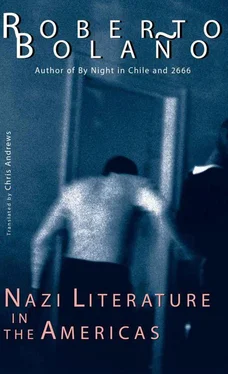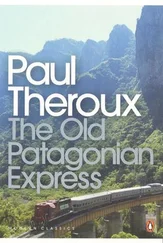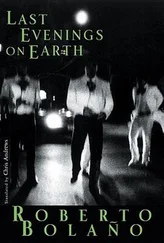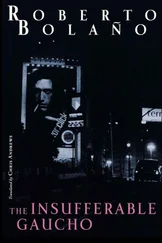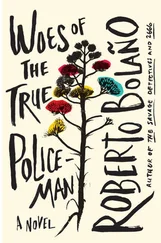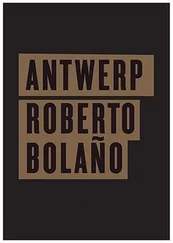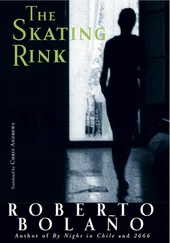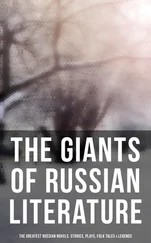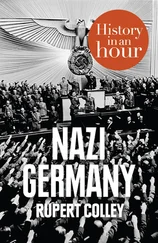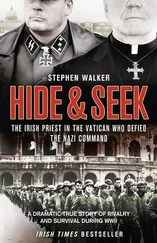Revolution and The Crystal Cathedral are the third and fourth installments of the saga. Revolution consists basically of dialogues between O’Connell and his dog Flip plus various secondary episodes of extreme violence set in a ruined Los Angeles. The Crystal Cathedral is a story about God, fundamentalist preachers and the ultimate meaning of life. Sodenstern portrays O’Connell as a calm but withdrawn man, who carries the skull of his great lost love Candace (who was killed by her husband in the second novel of the cycle) in a little bag permanently attached to his belt, nostalgically remembers various old TV series (in suspiciously accurate detail), and is friend to no one but his dog, who has taken on an increasingly important role: Flip’s adventures and reflections constitute sub-novels within the novel.
The Cephalopods and Warriors of the South cap off the O’Connell saga. The Cephalopods records O’Connell’s trip to San Francisco with Flip and their adventures in that city (where gays and lesbians rule supreme). Warriors of the South relates the clash between earthquake survivors in California and millions of hungry Mexicans marching northward en masse, devouring everything in their path. The situation is reminiscent, at times, of the conflict between Romans and barbarians on the fringes of the Empire.
Checking the Maps opens the Fourth Reich saga. It is full of appendices, maps, incomprehensible indices of proper names, and solicits an interaction in which no sensible reader would persist. The events take places mainly in Denver and Midwestern cities. There is no main character. The less chaotic stretches read like collections of stories haphazardly tacked together. Our Friend B and The Ruins of Pueblo continue in the same vein. The characters are designated by letters or numbers, and the texts are not so much scrambled puzzles as fragments of scrambled puzzles. Although presented and sold as a novel, The Fourth Reich in Denver is in fact a reader’s guide to the three preceding titles. The Simbas —the last installment before the confluence of the Fourth Reich and O’Connell sagas — a surreptitious manifesto directed against African Americans, Jews and Hispanics, gave rise to diverse and contradictory interpretations.
Sodenstern was a cult author, and several of his novels had been adapted for the screen by the time he came to publish the last three, which recount Gunther O’Connell’s initiatory voyage toward the central territories of the American continent and his subsequent encounter with the mysterious leaders of the Fourth Reich. In The Bat-Gangsters , O’Connell and Flip cross the Rockies. In Anita , an aging O’Connell rediscovers love with a teenage replica of his old girlfriend Candace (the plot is a simple transposition of Sodenstern’s situation at the time: he was besotted, like a teenager, with a young UCLA student). And in A, O’Connell finally penetrates to the heart of the Fourth Reich, of which he is elected leader.
According to Sodenstern’s plans, the saga of O’Connell and the Fourth Reich was to comprise five novels. Of the final two only rough outlines and indecipherable lists have survived. The fourth, to be entitled The Arrival , would have narrated a long vigil: O’Connell, Flip, Anita and the members of the Fourth Reich awaiting the birth of a new Messiah. The final, untitled novel would probably have explored the consequences of the Messiah’s coming. In a file on his computer, Sodenstern noted that that the Messiah could be Flip’s son, but there is nothing to suggest that this was more than verbal doodling.
Guatemala, 1954–Los Angeles, 2016
Guatemala’s most talented and unfortunate science-fiction writer spent his childhood and teenage years in the countryside. His father was the overseer of an estate called Los Laureles, whose owners had a library, and there it was that Gustavo learned to read and first tasted humiliation. Both reading and humiliation were to be constant features of his life.
Borda preferred blondes, and his insatiable libido was legendary, provoking innumerable jokes and jeers. Given the ease with which he fell in love and took offense, his life was one long series of indignities, which he endured with the fortitude of a wounded beast. Anecdotes about his life in California abound (yet there are few about his life in Guatemala, where he came to be regarded, albeit briefly, as the nation’s great writer): it is said that he was a favorite target for all the sadists in Hollywood; that he fell in love with at least five actresses, four secretaries, and seven waitresses, every one of whom rejected him, deeply wounding his pride; that on more that one occasion he was brutally beaten up by the brothers, friends, or lovers of the woman in question; that his own friends took pleasure in getting him catatonically drunk and leaving him lying in a heap, wherever; that he was fleeced by his agent, his landlord, and his neighbor (the Mexican screenwriter and science-fiction author Alfredo de María); that his presence at meetings and conferences of North American science-fiction writers was a source of sarcastic, scornful amusement (Borda, as opposed to the majority of his colleagues, had not even a rudimentary knowledge of science; his ignorance in the fields of astronomy, astrophysics, quantum theory and information technology was proverbial); that his mere existence, in short, brought out the basest, most deeply hidden instincts in the people whose paths he crossed, for one reason or another, in the course of his life.
There is, however, no evidence to suggest that any of this demoralized him. In his Diaries he blames the Jews and usurers for everything.
Gustavo Borda was just over five feet tall; he had a swarthy complexion, thick black hair, and enormous very white teeth. His characters, by contrast, are tall, fair-haired and blue-eyed. The spaceships that appear in his novels have German names. Their crews are German too. The colonies in space are called New Berlin, New Hamburg, New Frankfurt, and New Koenigsberg. His cosmic police dress and behave like SS officers who have somehow managed to survive into the twenty-second century.
In other respects, Borda’s plots are entirely conventional: young men setting off on initiatory voyages; children lost in the immensity of the cosmos who encounter wise old navigators; stories of Faustian pacts with the devil; planets where the fount of eternal youth may be found; lost civilizations surviving in secret. .
He lived in Guatemala City and in Mexico, where he worked at all sorts of jobs. His first books went entirely unnoticed.
After the translation of his fourth novel, Unsolved Crimes in Force-City , into English, he became a professional writer, and moved to Los Angeles, where he was to spend the rest of his life.
In answer to a question about the puzzling abundance of Germanic elements in the work of a Central American author, he once said: “I have been tormented, spat on, and deceived so often — the only way I could go on living and writing was to find spiritual refuge in an ideal place. . In a way, I’m like a woman trapped in a man’s body. . ”
MAGICIANS, MERCENARIES AND MISERABLE CREATURES
Caracas, 1927–Caracas, 2004
A man of impetuous and passionate character, the young Segundo José Heredia was nicknamed Socrates because of his insatiable appetite for discussion and debate on all manner of topics. He preferred to compare himself, however, to Richard Burton and T.E. Lawrence, for like those authors, he too wrote tales of adventure, three to begin with: Sergeant P (1955), the story of a Waffen SS veteran lost in the Venezuelan jungle, where he offers his services to a community of missionary nuns in permanent conflict with the government, as well as with local Indians and adventurers; Night Signals (1956), a novel about the dawn of Venezuelan aviation, the research for which included learning not only to fly a prop plane but also to parachute; and The Confession of the Rose (1958), in which, forgoing the vast spaces of the Fatherland, the author confines the adventure to a mental hospital, and in fact to the patients’ minds, making abundant use of interior monologue, diverse points of view, and a forensic-medical jargon that was widely admired at the time.
Читать дальше
